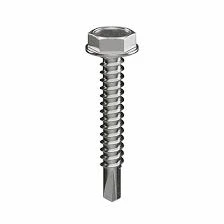Effective Solutions for Chemical Anchor Fixings in Construction Applications
Understanding Chemical Anchor Fixings A Comprehensive Guide
Chemical anchor fixings are an essential component in modern construction and engineering, providing robust solutions for attaching various materials to concrete, masonry, and other substrates. These innovative fixings are based on resin chemistry, offering significant advantages over traditional mechanical anchors, particularly in demanding environments. In this article, we will delve into the mechanics of chemical anchor fixings, their applications, benefits, and considerations for use.
What Are Chemical Anchor Fixings?
Chemical anchor fixings consist of a combination of a resin and a hardener that, when mixed, form a strong bond between the anchor and the surrounding material. The most commonly used resins are epoxy, polyester, and vinyl ester, each having distinct properties suitable for various conditions. Upon injection into a drilled hole, the resin amalgamates with the base material upon curing, creating a chemical bond that results in high load capacities and resistance to pull-out forces.
Applications of Chemical Anchor Fixings
1. Construction and Infrastructure Chemical anchors are widely used in structural applications, including the attachment of steel beams, columns, and precast concrete elements in buildings and bridges.
2. Structural Repairs They are instrumental in retrofitting and strengthening existing structures, allowing for the installation of new elements without compromising structural integrity.
3. Mechanical and Electrical Installations In many heavy-duty applications, such as machinery installations or electrical equipment mounts, chemical anchors provide the necessary safety and stability.
4. Urban and Industrial Environments Their resistance to harsh chemicals and environmental conditions allows chemical anchors to be employed in factories, chemical processing plants, and many outdoor structures.
5. Non-structural Applications Beyond structural uses, chemical anchors are beneficial for fastening fixtures and fittings, such as handrails, brackets, and signage.
Advantages of Chemical Anchor Fixings
1. High Load Capacity The chemical bonding formed as the resin cures allows for exceptional load-bearing capabilities, making chemical anchors suitable for heavy-duty applications.
2. Versatility Chemical anchors can be used in various substrates, including concrete, brick, and natural stone. This adaptability makes them ideal for diverse construction projects.
chemical anchor fixings

3. Corrosion Resistance Many chemical anchor systems are designed to resist corrosion, a critical factor in environments exposed to moisture, chemicals, and temperature fluctuations.
4. Installation Flexibility They can be installed with relative ease, including in wet conditions. Moreover, some resins allow for quick setting times, enabling faster project completion.
5. Minimal Expansion Forces Unlike mechanical anchors that can exert pressure on the surrounding material upon tightening, chemical anchors minimize expansion forces, reducing the risk of cracking or damaging the base material.
6. Reduces Noise and Vibration This type of fixing does not create the same level of vibration as mechanical methods, making them suitable for installations near sensitive structures.
Considerations for Use
While chemical anchor fixings offer numerous advantages, there are key considerations users must be aware of
1. Cure Time The curing time can vary based on temperature and resin type. It’s crucial to allow adequate time for the resin to fully cure before applying load.
2. Surface Preparation Proper preparation of the hole and surrounding substrate is essential for achieving maximum bond strength. Dust removal and ensuring the right temperature are critical steps in this process.
3. Environmental Conditions Always check the suitability of the anchor system for the anticipated environmental conditions (temperature extremes, chemical exposure, etc.).
4. Technical Guidance It’s advisable to consult technical data sheets and guidelines provided by manufacturers to ensure compatibility and proper use.
5. Training and Experience Personnel applying these systems should be trained in the correct techniques to ensure safety and performance.
Conclusion
Chemical anchor fixings represent a cutting-edge solution in the toolkit of construction professionals, delivering unmatched strength and versatility. Their ability to adapt to a variety of substrates and load conditions makes them invaluable in making strong, durable connections in virtually any construction project. It’s crucial to understand their properties, applications, and installation requirements to fully leverage their potential. As the construction industry continues to evolve, chemical anchors will undoubtedly play an increasingly vital role in building safe and lasting structures.
-
Weatherproof Plastic Expansion Anchors for OutdoorМэдээJun.06,2025
-
Sustainability in the Supply Chain: Eco-Friendly TEK Screws ProductionМэдээJun.06,2025
-
Load-Bearing Capacity of External Insulation FixingsМэдээJun.06,2025
-
Double Head Bolts: Enhancing Efficiency in Industrial MachineryМэдээJun.06,2025
-
Corrosion Resistance in Chipboard Screws: Coatings for Wholesale DurabilityМэдээJun.06,2025
-
Butterfly Toggle Bolts : Enhancing Structural ResilienceМэдээJun.06,2025
